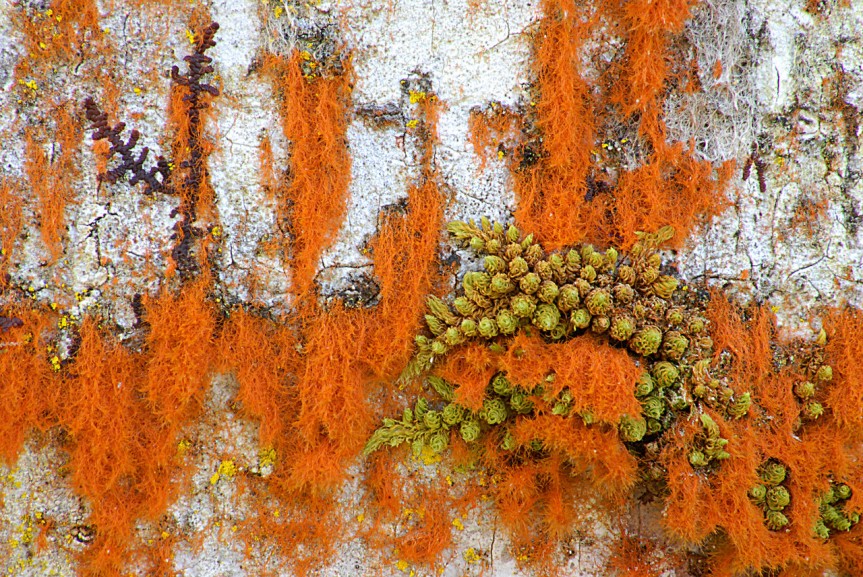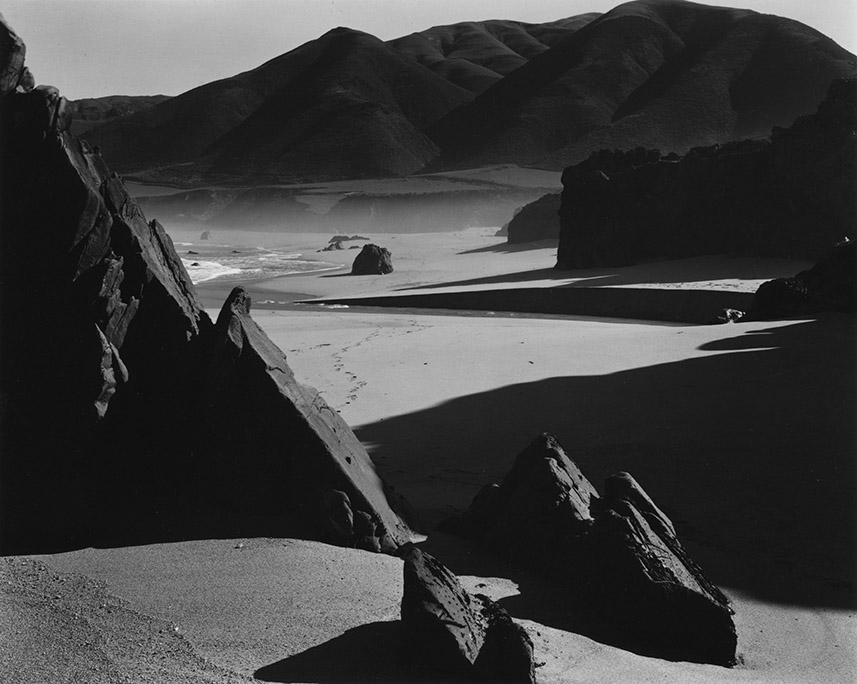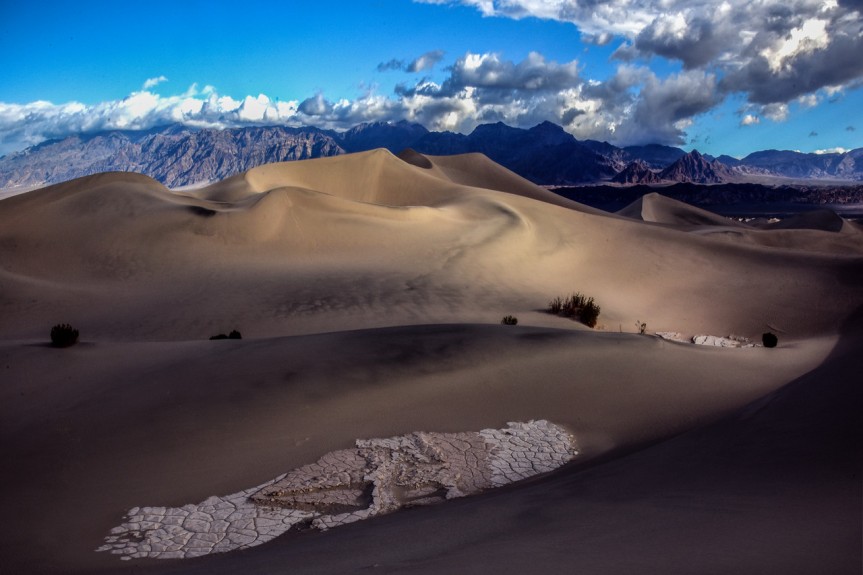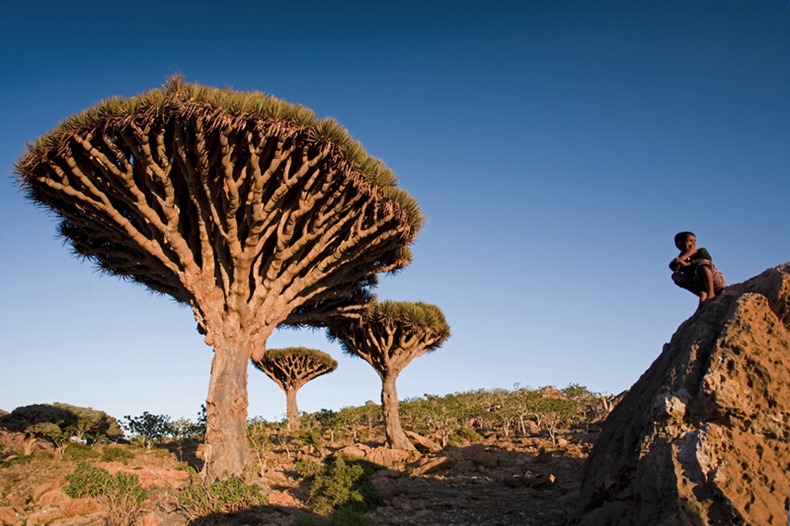
Lloyd Davidson is an Evanston photographer who made his Local Art @ EPL debut back in 2015. Now the retired NU Life Sciences Librarian has returned with a fresh collection of breathtaking nature photography captured everywhere from New Zealand to the American Southwest to James Park. You can catch this inspired show on the 2nd floor of EPL’s Main Library through the end of September, and you can view more of Dr. Davidson’s work by visiting his online gallery. Recently we spoke with him via email about his artistic inspirations including Kafka, Picasso, and Edward Weston, his three simple rules for capturing the perfect shot, the Louis Pasteur quote that is his motto, and the rich Evanston art scene.
Evanston Public Library: Can you tell us a little about your background as an artist? How did you get started in photography? Was there something specific in your life that sparked a need to create? What inspired you in the beginning? What inspires you now?
Lloyd Davidson: While I was born in Phoenix, AZ, I was mainly raised in Richmond, CA, a working class community in the northern part of the San Francisco East Bay Area, some ten miles in physical distance from Berkeley but probably a thousand in its cultural aspirations. While I was in high school there in the 1950s I became enamored of the Surrealist and Dadaist movements (which still inspire my more abstract works), lost my religion, got interested in science and science fiction, and fell in love with authors like Kafka, Camus and Dostoyevsky as well as with artists like Picasso and the photographers Ansel Adams and Edward Weston. One of the first photographs that really affected me was Brett Weston’s (Edward’s son) “Garrapata Beach,” a copy of which I now own. In addition (and to my parents’ distress), I greatly enjoyed the rock ‘n’ roll of the period, typified by Little Richard and Fats Domino, along with Bela Bartok’s and Dmitry Shostakovich’s string quartets, which are still among my favorite musical pieces.

After high school I immediately entered the Air Force for 4 years, where I served as an electronics specialist and technician, helping to keep our landing control radar stations functioning so B52s loaded with A-Bombs could land safely. Following that I worked for a year in a radiological medicine company and then entered as a sophomore at UC Berkeley.
I didn’t buy my first real camera, a Nikon F, until I began graduate work there in the Paleontology Department, working on living shelled marine protozoa at what was then Berkeley’s Bodega Bay Marine Laboratory in the late 1960s (just after the exciting period of the Free Speech Movement and during the anti-war protests). That area is rich in lichens and wild scenery, and I was immediately entranced by it and became intent on capturing this beauty on both B&W film and by color slide, many of which I still use in exhibits. For whatever reason, even many of my early works are still publishable as decent art, and I occasionally exhibit them. After achieving an MA in Paleontology, I switched to a Doctoral program in cell biology, which involved, in part, work as a transmission and scanning electron microscopist, which provided me then and later, as a biology professor at Notre Dame, with a superb darkroom, in which I learned to produce Cibachrome color photos.
However, it was the advent of digital cameras, printers and computing power that really allowed me to begin to fully explore photography, and I bought my first Nikon digital camera in 2002 when my wife, Arden, and I went to the hyper-saline, hyper-alkaline Mono Lake in the Easter Sierras of California to study the protozoa that lived there. It was that experience that really gave us the impetus and capability to discover the promise of this magnificent new medium.

EPL: Can you give us a window into your creative process? How do you choose your subjects?
LD: I find worthwhile subjects to photograph virtually every time I step outside with my camera, or perhaps they find me. Whether it’s the beauty of the Fibonacci patterns in sunflowers, the equiangular spirals of snail shells, the way in which water forms dendritic patterns across sand, or thousands of other such interactions that form the complex but entirely non-random forms and exquisite broken symmetries of nature that most humans find so attractive, nature is filled with a near infinity of potential subjects.
I find that the ability to easily transform color photographs into B&W images while changing the contrast of each color separately presents quite a wonderful advance in the power and flexibility of art photography and is far superior to the need to use specific colored filters in the B&W film days. Photo sharpening techniques are another superb improvement over the capabilities of film, as is the ability to modify the ISO of the sensor for each individual shot.
Much of any success I may have had comes largely through the applications of three very simple rules: find interesting patterns and/or subjects, fill the frame with the subject, and keep background clutter to a minimum. Remember that it’s much more efficient, when possible, to remove what clutter you can before you shoot rather than trying to do it in Photoshop or other photo editing software.
As for camera technique, expose more or less correctly, realizing that mild underexposure is much better than overexposure. Keep both shutter speed and depth of field at an optimum for the conditions while realizing that motion blur, caused by too slow a shutter speed, will ruin most photographs. Use a tripod when possible.
EPL: Can you walk us through the conception of a specific photograph?
LD: “The Agathla Peak” and the “Death Valley Dunes at Sunrise” photographs in our current EPL exhibit are typical examples of how I work. First find a subject that you like and put some thought and planning into how you plan to capture it. Neither of these subjects were simply stumbled upon.

The “Death Valley Dunes at Sunrise,” for example, required that we get up well before sunrise and hike for an hour in the dark to a place where we could watch this scene as the sun rose at our backs. Then we simply waited, waited and waited for just the right light. The dappled early-morning light that appears in this photo only lasted for less than 3 seconds but my capturing of that instant was not at all accidental. Arden and I had been sitting on the fore dune overlooking that scene for over two hours waiting patiently for that very instant. Finding grand and beautiful things is simply not enough to create a good photograph; recognizing the full potential of each change in lighting and play of cloud and shadow is critical to success.
In the case of the “Agathla Peak” photo, the sunlight that simultaneously struck the rustic corral in the foreground and the top of the peak was, again, a very short lived phenomenon but my capture of that instant was entirely controlled and was achieved only through patience and persistence, and knowing beforehand the sort of effect I was looking for.
After an illustrated talk I gave some months ago on a set of my photographs, one of the audience members said, quote, “Those are wonderful photographs but aren’t they mostly just luck?” My answer was to quote Louis Pasteur: “In the field of observation, chance favors only the prepared mind.”
EPL: What are your future goals and plans as an artist?
LD: We are always driven by our desires to explore new areas and new methods and to improve our observational and technical skills. The latter of these is a never ending process as software and equipment is constantly improving and adding new areas of applications, from video to 3-dimensional panoramics to virtual reality. The world of photographic technologies is expanding logarithmically which is greatly stressing our ability to cope with such change, but this certainly keeps us from becoming bored. Personally, I’m just beginning to explore things like slow motion and time lapse photography.

EPL: Do you have a travel destination you’re eager capture on film?
LD: The island of Socotra, a 20 million-year-old island in the Arabian Sea, off the coast of Yemen (and owned by Yemen), is near the top of that list, as is the western coast of Madagascar. Both of these stand out for their exotic trees and other plant life, as well as their unusual insects, lizards and other life forms.
EPL: How do you find Evanston and the Chicagoland area as a place to work and exhibit as an artist? What inspires you as an artist about the community where you live?
LD: Chicago and Evanston are wonderful places to live and are remarkably rich in opportunities and cultural content. This area provides easy access to an exceptional variety of natural history areas filled with lovely plants, animals and landscapes that serve as potential art subjects. For example, the network of forest preserves and other natural areas, not only in Cook County but within a few hours of travel in any direction from here, e.g. the Indiana Dunes or Door County, provide an inexhaustible resource for photography. The full range of seasons we experience here also provide a rich variety of constantly changing environments that are rich in photographic potential. Winter, for example, produces a rich array of frozen ponds, each filled with exotic textures and patterns such as air bubbles, ice crystals, captured leaves and other attractive subjects.
Furthermore, the MCA, the Chicago Cultural Center and the Art Institute are world famous cultural treasures and allow any aspiring artist to become familiar with the works of others that can serve to inspire their own creative explorations.
Besides this, with relatively little effort it is possible to find an array of possible places to exhibit in the greater Chicago region. I’ve taken part, for example, in Evanston’s occasional Art Under Glass exhibit program, and my wife and I have exhibited twice in the last two years in EPL, several times in Skokie’s Emily Oaks Nature Center (where we’ll be exhibiting again in Jan-Feb of 2017), in various cafes, and as members of the Skokie Photographic Society. I am also currently exhibiting in the Cultivate Urban Rainforest Store and Gallery located at 704 Main Street in Evanston, which is an important new addition to the art gallery spaces in our community. Furthermore, the Alley Gallery in Evanston has recently opened their own exhibit gallery just across from the relatively new Bookends & Beginnings. More generally, the numerous juried art fairs in Chicago and Evanston are always open to talented artists who wish to sell their works.
In general, developing exhibits is exhilarating and flattering for the exhibitors, whatever medium they work in, and, even more importantly, fun. I recommend it for anybody who has an interest in photography and a decent collection of works worth showing.
Interview by Russell J.
